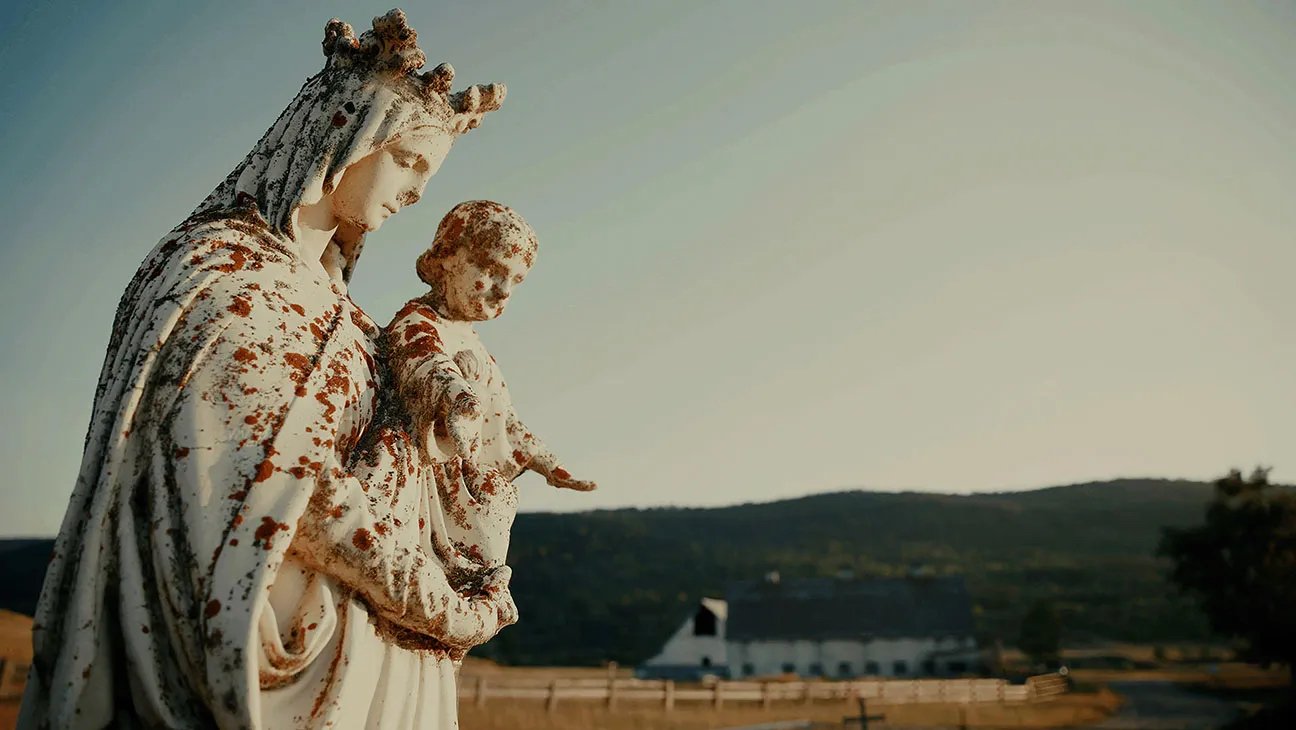HFC at Doc Days '24: Sugarcane Review
Emily Kassie and Julian Brave NoiseCat’s Sugarcane, which had its Texas premiere at the Austin Film Society’s Doc Days festival, takes a deeply personal approach to what could be a sensationalistic true-crime story. For nearly three years, the filmmakers embedded themselves in a Canadian reservation to explore the government-funded investigation into unmarked graves and missing children at a nearby Catholic-run Indigenous boarding school.
Hundreds of these government-funded boarding schools opened across North America in the 19th and 20th centuries. The school systems removed Indian children from their families and their cultures, forced assimilation to Christian, “civilized” society, and subjected many children to physical and sexual abuse.
Kassie, who has a background in investigative journalism, reached out to Chief Willie Sellars of the Williams Lake Indian Reserve (referred to locally as Sugarcane Reserve) as the discovery of unmarked graves at residential schools began trickling into the news. After receiving a warm welcome from Chief Sellars, Kassie asked NoiseCat, a former colleague, if he’d want to collaborate—sparking a serendipitous connection.
NoiseCat’s father Ed, who as a baby was found abandoned in an incinerator at the residential school near Sugarcane, makes up one of several threads pursued throughout the documentary. Alongside NoiseCat and Ed’s search to fill in the blanks of their missing family history, we watch Chief Sellars take on new challenges as the investigation raises his community’s pain to the surface. There’s also former chief Rick Gilbert, who struggles to untangle his murky family ancestry and past trauma as a survivor of the residential school, and Charlene Belleau, a survivor of another residential school who had been advocating—unsuccessfully—for some form of justice since the 1980s.
Outside of a handful of scenes on the grounds of the residential boarding school, which shut down decades prior, the investigation takes a backseat in the documentary. Instead, Kassie and NoiseCat—who shot over 150 hours of footage—center the stories of Ed, Chief Sellars, Rick, and Charlene. In doing so, we’re brought up close and personal to their pain and healing. Sugarcane takes a light touch, allowing the survivors and their family members space to grapple with past trauma and new revelations about their community. We watch a group of residential school survivors sharing the abuse they experienced and the reverberations it still has in their lives decades later; we see NoiseCat and Ed standing on the porch outside their home, coming to terms with the fact that both have felt abandoned by their parents. The documentary uses fixed focal-length lenses throughout, which has the effect of bringing the audience directly into these intimate scenes.
The heavier moments in the documentary are intercut with sweeping shots of the landscapes of British Columbia and scenes highlighting NoiseCat, Ed, and others taking part in traditional ceremonies, both big and small. The scenes of nature and the customs of the Secwépemc people provide respite from the dark subject material, and convey a respect for the documentary subjects themselves.
The raw pain experienced by those profiled is sharply contrasted with the milquetoast responses from the government or church officials they confront. For many survivors, healing and justice begins with an authentic acknowledgement of the harm caused. But throughout the documentary, the response offered to the survivors is often a quick apology with the hope of pivoting to forgiveness, rather than fully reckoning with what happened.
This most striking moment happens during Rick’s visit to the Vatican, after receiving an invitation from Pope Francis alongside dozens of other survivors. The meeting at the Vatican is anticlimactic: there’s no real admission of guilt or powerful reckoning, but instead a brief PR apology from the Pope, who ends by saying “bye-bye!” as he walks out. And when Rick later meets one-on-one with a clergy member at the order responsible for his abuse, he shares something he’s struggled to reconcile himself with throughout the film: he was born after his mother, who had also attended the boarding school, was assaulted by the school’s principal. The clergy member is silent after this disclosure before finally responding that Rick must find it in himself to forgive the Church.
The sheer amount of footage and time Kassie and NoiseCat used to create Sugarcane is impressive, but the documentary feels stretched thin between so many different subjects. Each person receives equal time and focus throughout the documentary. Despite this, many of their narratives end up lacking clear throughlines. The pacing of the documentary also plods at times, making it seem as though a heavier hand in editing would have helped to create concise storylines that still pack a punch.
Beyond its flaws in cohesive narratives, the documentary functions well as a piece of advocacy journalism. There’s no doubt that Sugarcane sheds light on a covered-up piece of history. And portraying this kind of pain on screen is immensely difficult to do with grace and respect for survivors—particularly when there’s a close-to-home aspect for a filmmaker, like NoiseCat with his father. Technical problems aside, Sugarcane does justice to those it profiles by giving them room to speak the past out loud and unwork the intergenerational trauma that haunts them.




Alix is the editor-in-chief for Hyperreal Film Journal. You can find her on Letterboxd at @alixfth and on IG at @alixfm.